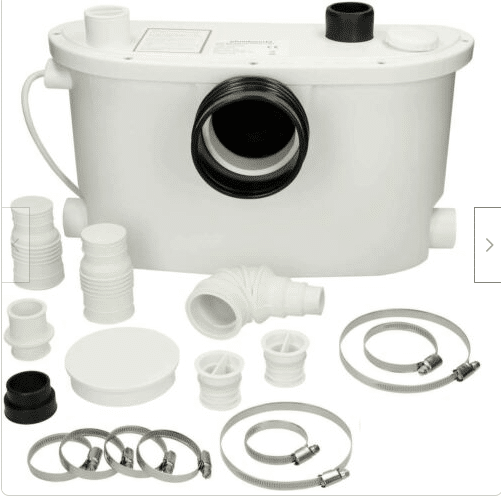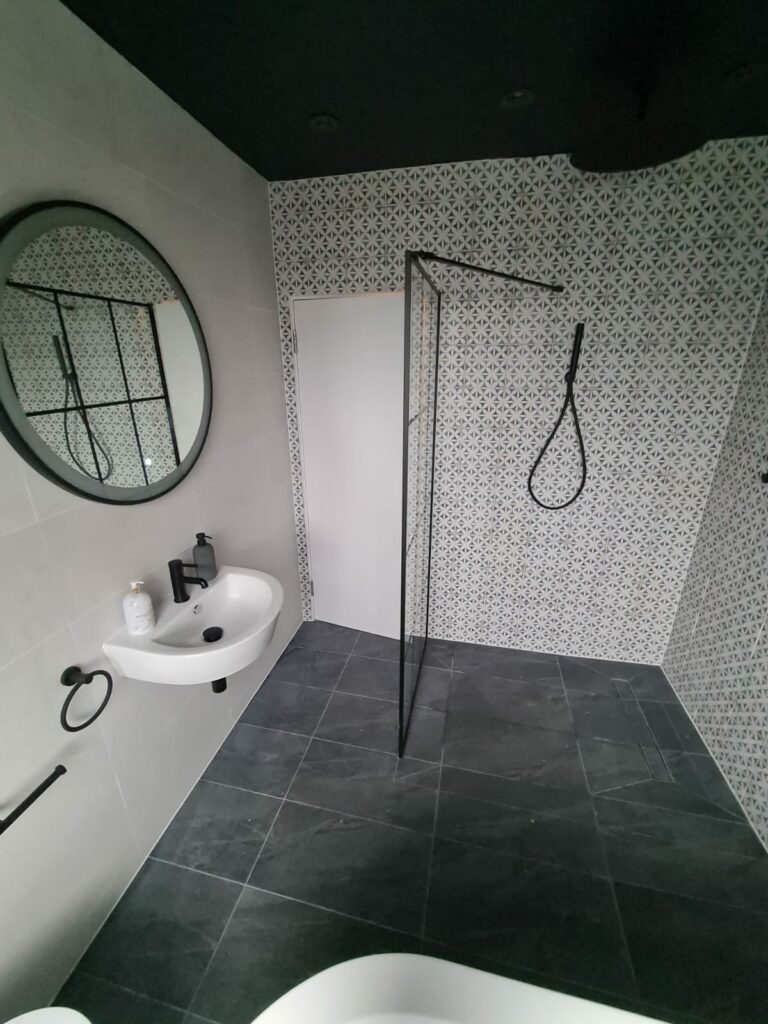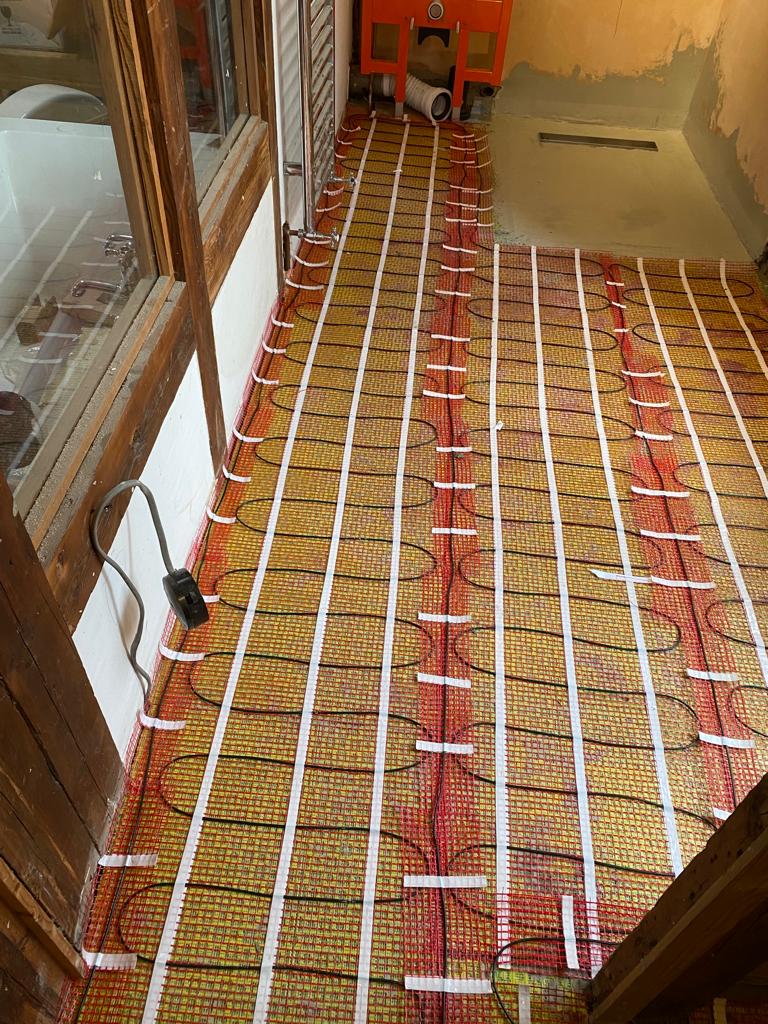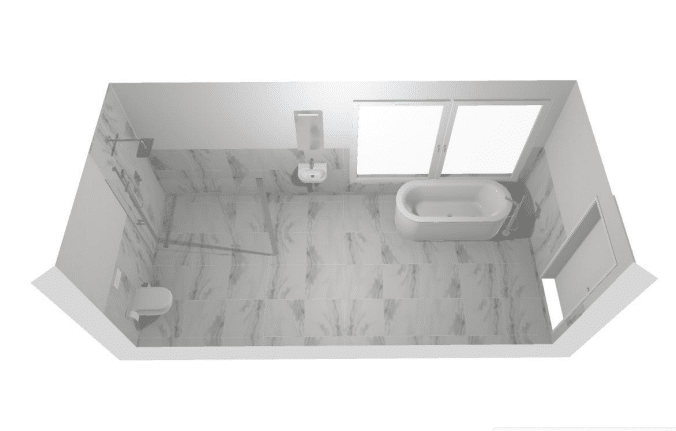Embarking on a bathroom renovation requires careful consideration of materials, particularly when it comes to the inevitable battle with moisture. Common misconceptions about water-resistant building supplies can lead to costly mistakes in such a humidity-prone environment.
With years of experience in construction and renovation, I’ve navigated through countless decisions over the best material choices for bathrooms, separating fact from fiction along the way.
Understanding whether to use green plaster board or cement boards hinges upon one crucial detail: not all ‘water-resistant’ products are created equal. This vital piece of knowledge is often overlooked but could be the difference between a pristine bathroom retreat and an unwelcome mold invasion.
Armed with this insight, let’s delve into what makes these materials distinct and why your choice matters. Discovering their unique capacities will ensure your walls remain uncompromised by moisture’s persistent advance.
Characteristics and Applications of Green Plaster Board
Green plaster board is water-resistant but not waterproof, making it suitable for ceilings and non-water-direct walls in the bathroom. It provides some protection against moisture, but it’s important to consider direct water exposure when using green plaster board for bathroom renovations.
Water-resistant, not waterproof
Green plaster board is designed to stand up to moisture, thanks to its green-coated exterior. This makes it a solid choice for areas in your bathroom where condensation and humidity are common, but where water doesn’t directly hit the walls or ceilings.
Think of places like the area above your bathroom sink or the ceiling above a shower—green plasterboard can handle the occasional splash and steamy air without falling apart.
However, it’s critical to know that being water-resistant does not make this type of gypsum board invincible against water. If you’re planning on installing wall panels around your tub or inside your shower, green plaster board isn’t going to cut it; these spots need a material that’s truly waterproof.
In such wet areas, frequent exposure to water will eventually saturate the green plasterboard leading to damage like mold growth or deterioration over time. That’s why for any space in your bathroom renovation that will get soaked regularly, cement boards are the go-to option as they offer superior resistance and protection from water damage.
Suitable for ceilings and non-water-direct walls
While green plasterboard is water-resistant and suitable for areas with light moisture, it is best used in ceilings and non-water-direct walls. This type of drywall, also known as moisture-resistant drywall, offers resistance to condensation and light levels of humidity.
With its gypsum composition, green plasterboard provides a cost-effective solution for bathroom renovations where direct water exposure isn’t a concern.
Cement boards are better suited for wet areas like tubs and showers due to their waterproof qualities. However, for bathroom applications where moisture levels are lower or direct water contact is unlikely, using green plasterboard can be a practical choice that aligns with the specific needs of the project.
Characteristics and Applications of Cement Boards
Cement boards are waterproof and suitable for wet areas like tubs and showers. They provide excellent mold and mildew resistance, making them ideal for bathroom renovations.
Waterproof
Cement boards are highly waterproof and suitable for wet areas like tubs and showers. They are known for their resistance to moisture, making them a popular choice for bathroom renovations where direct water exposure is a concern.
AQUAPANEL cement boards, reinforced with fibers and made mostly of cement, provide strong protection against water damage in shower installations.
Green plasterboard, or moisture-resistant drywall, on the other hand, offers water resistance but is not entirely waterproof. It is more suitable for ceilings and non-water-direct walls in bathrooms.
Suitable for wet areas like tubs and showers
When it comes to wet areas like tubs and showers, cement boards are the ideal choice due to their waterproof qualities. These durable boards, reinforced with fibers and primarily composed of cement, provide excellent resistance against moisture, making them a popular option for bathroom installations such as tub and shower walls.
Cement boards like AQUAPANEL are specifically designed to withstand direct water exposure in these high-moisture areas, offering long-term protection against dampness and humidity.
For wet areas like tubs and showers in bathroom renovations, cement boards outshine green plasterboard due to their exceptional resistance to moisture. Their robust composition ensures reliability and durability when facing constant exposure to water, making them an optimal choice for maintaining the integrity of bathroom walls in these particularly challenging environments.
Conclusion
Considering the moisture levels and direct water exposure in your bathroom, it’s important to choose between green plaster board and cement board for your renovation project. Each has its own advantages and applications, so make sure to weigh them carefully before making a decision.
Consider moisture levels and direct water exposure when choosing between green plaster board and cement board for bathroom renovations
When choosing between green plaster board and cement board for bathroom renovations, it is crucial to consider the moisture levels and direct water exposure in the specific areas of application.
Green plasterboard, also known as water-resistant drywall, is suitable for areas with light moisture due to its resistance to condensation and water. On the other hand, cement boards like AQUAPANEL are an ideal choice for areas with heavier moisture as they offer superior waterproofing qualities.
Understanding the specific needs of the renovation project in terms of moisture levels will help in making an informed decision between these two materials.
It’s essential to factor in both green plasterboard and cement boards’ advantages when evaluating their suitability for bathroom renovations. While moisture-resistant drywall is popular due to its resistance to moisture, cement boards’ waterproof qualities make them especially well-suited for tub and shower installations.
FAQs
1. What’s the difference between green plasterboard and cement boards for bathrooms?
Green plasterboard, known as moisture-resistant drywall, is good for wall and ceiling applications where dampness occurs. Cement boards are stronger backer boards that work well in wet areas like showers.
2. Is green plasterboard water-resistant enough for bathroom renovations?
While it’s moisture-resistant, it isn’t waterproof like cement sheet or tile backer board which are better suited for heavy water exposure areas such as shower walls.
3. Can I use cement boards on all bathroom surfaces during renovation?
Cement boards can be used in most bathroom areas but are essential behind tiles in wet zones due to their waterproof properties and ability to prevent mould growth.
4. Are there specific construction supplies I need when using green plasterboard or cement boards?
You’ll need different installation materials; screws designed for moisture-resistant drywall when working with green plasterboard, whereas you will require special fasteners and adhesives for attaching cement sheets.
5. Which material provides better protection against water damage during a bathroom remodel?
Cement boards offer superior protection against water damage over green plasterboard making them ideal as a base for tiling in constantly wet spaces within your bathroom renovation.









